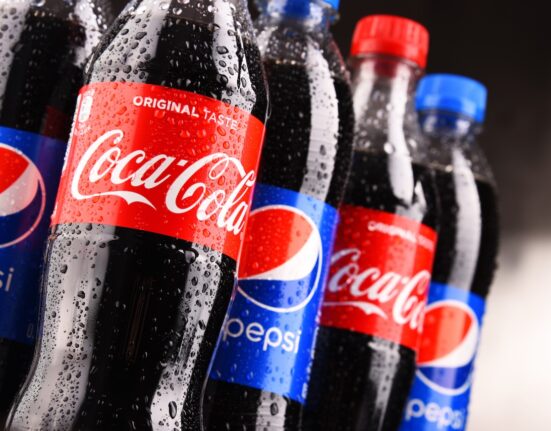Artificial Intelligence (AI) is here. It’s in our lives, influencing us daily through many conscious and subconscious ways, much the same that advertising has been influencing consumers for decades. But the propaganda is different, and the topic is more divided.
As with most changes to the familiar, there are early adopters and early naysayers, and a large pool of optimists and pessimists wading around deciding to swim or seek higher ground. Looking back on the technological advances of recent decades, the internet and social media both received conflicting and equally compelling responses upon introduction. Yet, you’d be hard-pressed today to find a globally operating company that does not rely on either the internet, social media, or both—as one of course needs the other to exist—to operate and stay in business.
With this reflection, it’s easier to put AI into context as the fresh produce industry and the broader world gain more understanding of the power and opportunity this innovative technology has introduced.
As we well know, AI is already impacting our work. You may have noticed Zoom’s AI Companion auto-record your most recent call, or that a Google search on your mobile device is now powered by Google AI’s Gemini. The leader in search states: “It is an exciting time in the development of AI. [Google’s] approach to developing and harnessing the potential of AI is grounded in our founding mission—to organize the world’s information and make it universally accessible and useful—and it is shaped by our commitment to improve the lives of as many people as possible. It is our view that AI is now, and more than ever, critical to delivering on that mission and commitment.”
If AI is designed to improve the lives of as many people as possible, can it also improve our supply chain? In order to fully understand this still-emerging technology and its infinite applications across the fresh produce supply chain, let’s take a look at some current applications in action.
Growing Operations
Growing operations using AI are holding their cards close to their vest as the technology is creating efficiencies that are saving time and money, resulting in a solution to our labor challenges. However overstated that may read, AI is proving to be an eager new member of the production team in controlled environments and field operations alike.
Through Machine Learning (ML), a type of AI that is focused on using data and algorithms to imitate the way that humans learn, gradually improving its accuracy, growers are able to train AI with historical data, uncovering patterns and developing easily replicated outcomes. A trained AI model, built on a robust data set of historical inputs, can then begin to make practical application predictions and decisions similar to the way humans reason and detect patterns. Streamlining the process of data collection, distillation and decision-making based on accurate and timely data is where ML can excel in the field.
As ML inputs improve, so too will the collection of data that is used to train ML. Growers are challenged to systematically organize and make use of the amount of data they are constantly measuring and gathering. AI will force growers into a new age of data collection and digital storage as older systems are not AI-enabled or supported, opening the door to a new era of grower management with greater and faster access to decision-making due to the speed of AI outcomes.
Managing and Moving Product
From warehouse automation to route optimization, the benefits of using AI across the supply chain include real-time insights and adaptability and automated decision-making. AI-powered navigation predicts the most efficient route for on-time, safe and cost-effective delivery by factoring in data from traffic sensors, weather forecasts, GPS and satellite. With the assistance of AI, transportation efficiencies allow for cost savings, less time on the road for drivers and less spent at the pump to fill the tank due to traveling the most efficient mileage. It also leads to more accurate tracking of loads, keeping deliveries secure and reliable.
In warehouses, AI is automating operations like picking, packing, sorting and inventory management—providing a real solution to labor challenges across the produce supply chain. In a building where maximizing every square inch of space leads to greater inventory and profitability, the use of AI can help warehouse operators maximize capacity.
Similar to AI applications of ML in growing operations, data quality and system integration will prove problematic without comprehensive technology adoption across enterprises. AI has the potential to force warehouses that are reluctant to adopt this innovative efficiency tool out of business as they will continue to experience human errors that their competitors will have solved with ML.
For adoption in the field, in warehouses and on the road, the cost and complexity of AI implementation will need to be considered. Technology advancements are not unilateral and will have a ripple effect throughout organizations and operations if done hastily or without a strategic rollout of the new technology. AI is at a point where it is replacing older systems, not integrating, and therefore will lead to comprehensive change in the ways companies are operating.
Grocery
According to studioID—part of industry news publication Grocery Dive—“some grocers are already leveraging AI behind the scenes for piecemeal tasks such as monitoring produce freshness or optimizing operational processes.” Similar to the benefits of AI in warehouse and inventory management, grocery is leveraging the predictability and efficiencies of this technology across the whole operation.
Customer-facing applications of AI in grocery stores are where we see the most efficiency, and as a benefit to the grocer, manufacturer/producer and consumer alike. From scan data at the register alone, grocers have been collecting a treasure trove of data on shopper behavior and preferences. Supported by the power of AI, this vast data set helps grocers improve inventory management, analyze and improve their marketing programs, and improve customer service, among other benefits.
Taking shopper behavior data one step further, smart carts like Caper by Instacart are personalizing deals for shoppers in real-time while gaining deeper business insights throughout the transaction. StudioID notes, “Nowhere is AI poised to have a bigger impact on the grocery business than in the cart.” This innovative way of predicting and then serving consumers with beneficial offers and deals will take the digital performance of in-store advertising to a whole new level of personalization. No longer will producers need to rely on shoppers using their phones to reach them with digital and in-app ads; but the digitization of the shopping experience will truly engage the shopper as they meander from aisle to aisle in a highly curated and personalized way.
Consumers’ Lives
As beneficiaries of the supply chain efficiencies that AI is adding to the fresh produce journey, consumers are also realizing the personal benefits of adopting this new technology into their homes. For those who have already outfitted their abode with smart devices, AI-powered efficiencies are the next natural progression in the home. When consumers once used to ask Alexa to add products to their grocery list, Alexa now asks them if they forgot a commonly ordered item; an ML that predicts based on behavior patterns.
And smarter applications are moving in, too. Smart refrigerators are able to use AI to recommend recipes based on the ingredients it can “see” in the fridge, a scenario played out in a recent Verizon smartphone commercial. Alexa and her cousins Siri and Google are not going away, but they are getting smarter. Once again, years of data collection and behavior analysis will allow these home devices to further integrate into consumers’ lives. Google founders continue, “We believe that AI is a foundational and transformational technology that will provide compelling and helpful benefits to people and society through its capacity to assist, complement, empower and inspire people in almost every field of human endeavor.”
The efficiencies powered by AI are undeniable, but even the most respected genius minds of our time remain skeptical of this unleashed power and the future it promises. Without regulation currently, the training of AI models such as ChatGPT leaves people and their personal and corporate data vulnerable. Some companies have chosen to adopt their own policies of banning ChatGPT in the workplace, while others are leveraging the efficiency of the tool with caution and heavy oversight. With any technology, there will be bad actors who are able to manipulate and exploit the data for harmful use. It has taken social media more than two decades to regulate itself, and still, there is harmful content being shared every day.
From deep-fake images, misinformed generative data sets, and videos and voice manipulation created using Generative AI, it will take time and much work to properly harness the power of AI. But the benefits currently seem to outweigh the spoils, and thus is the cost of progress and efficiency. AI is here.





